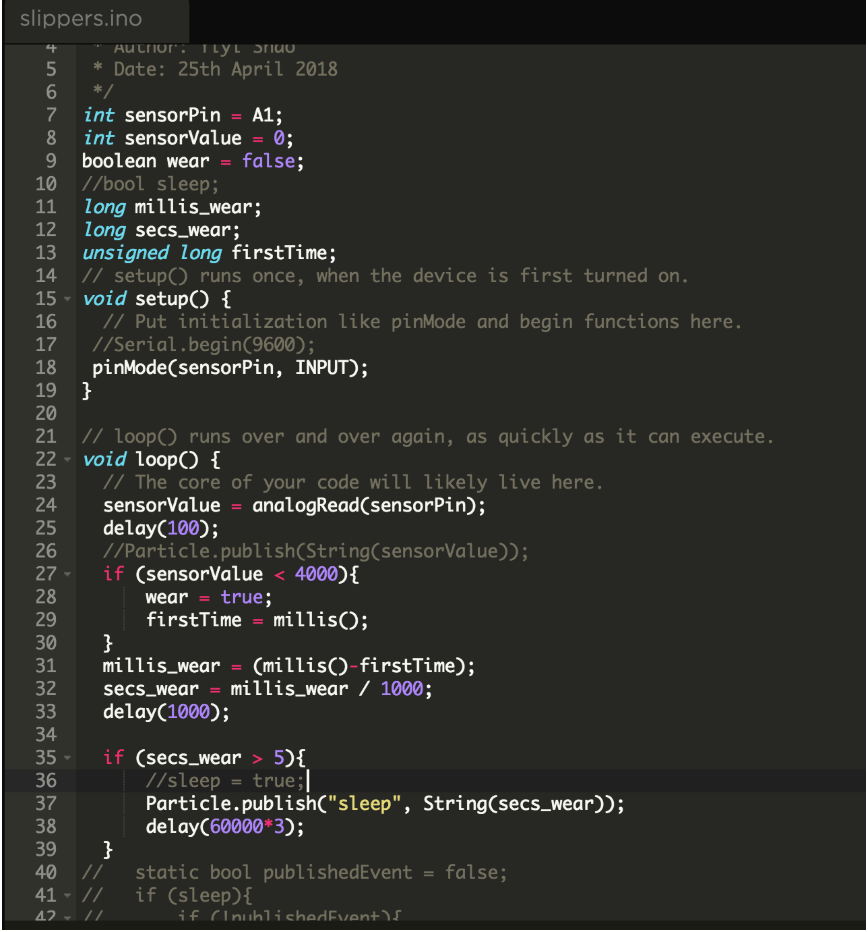Title: Sleepers
Circuit Board: Particle Photon
Material: 3mm white wool felt, conductive thread, conductive fabric, pressure sensing fabric
Fabrication Method: laser cutting
Method of Wearing: slippers
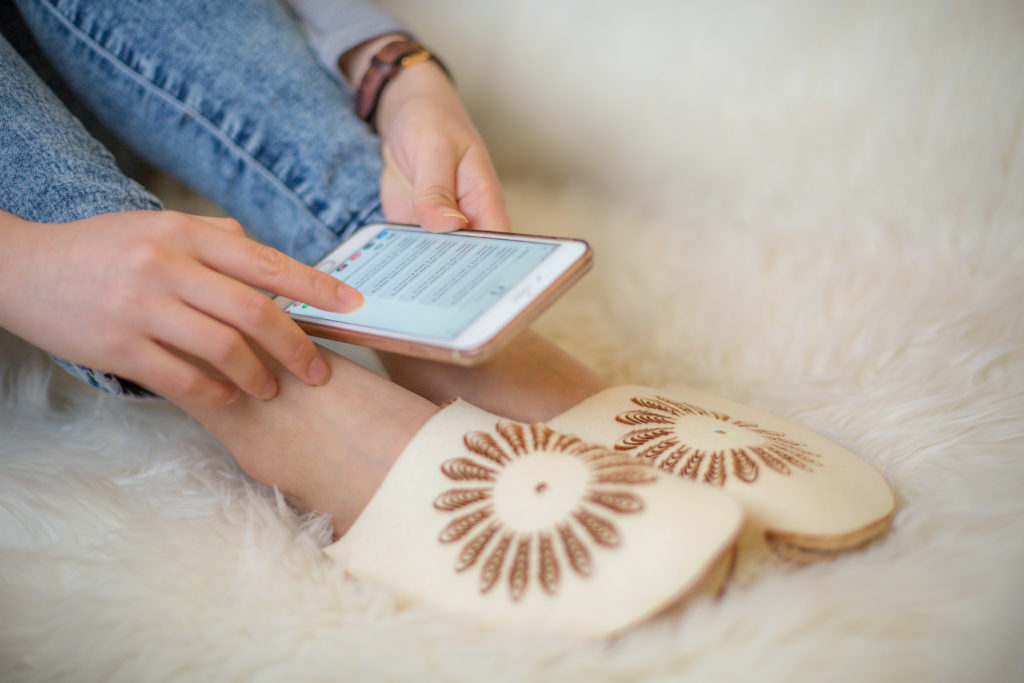
Description: Sleepers are designed to keep the user from staying up too late. It will send messages of “It’s time to go to bed” continuously to the user after a certain amount of time. Only when the user goes to the bed and not wearing Sleepers, the user’s phone will stop getting those messages.
Wearability (including initial goals and final results – what was/wasn’t addressed):
- Aesthetic: Aesthetic is the main goal of Sleepers, we try to find a way to combine digital components into soft fabrics. The appearance of sleepers wouldn’t remind any of the electronics at the first impression as they are seamlessly embedded within the interlayer of the fabrics. Sleepers are minimalist design with just two pieces of white felts. Geometric flower patterns are designed to go with the led on particle photon on the top, to show if the slippers are online and functional.
- Comfort: Comfort is also another main goal when designing Sleepers as slippers themselves are supposed to be cozy when wearing at home, so comfortability and lightweight are the crucial elements. As the fact that human feet are very sensitive especially most people like to wear slippers with bare feet so we developed the layering technique to work with the rigid digital components.
- Easy to use: Sleepers are very easy to use, the functionality is very simple just to focusing on whether it has been worn. The user can plug in the mini USB cable to charge the battery when it’s out of power.
However, there are some limitations and future improvements for the Sleepers. The first one is the improvement for the position of charging port, either to find a way to extend the mini USB port or add an external led to replacing the onboard RGB status LED. The second one is the improvement of the power switch, it should be less electrical appearance.
Findings:
We developed a method of using a double layer to work with felt, the first layer is for the general appearance and the second layer is for circuit and other digital components. We cut the felt halfway through to hide the wires and cut a few shapes fully to place the microcontroller and other components such as a resistor.

Machine setting: Full cut: Speed,60 Power,20. Half cut: Speed,60 Power,13.
Process Documentation: We did some research online before designing the Sleepers, mostly focused on pattern drafting on the fashion industry and DIY community. We first tried the free pattern as shown in figure 2 and laser cut on 1.5mm grey felt, the results turned out very well but it’s too thin and soft for slippers. But this issue can be fixed after adding an outsole at the bottom. However, most importantly, there is no place to put components and microcontroller, which is the main challenge for us.

Source from https://www.pinterest.ca/pin/112097478202467028/?lp=true
Figure 3(right): Sleepers design draft in Illustrator
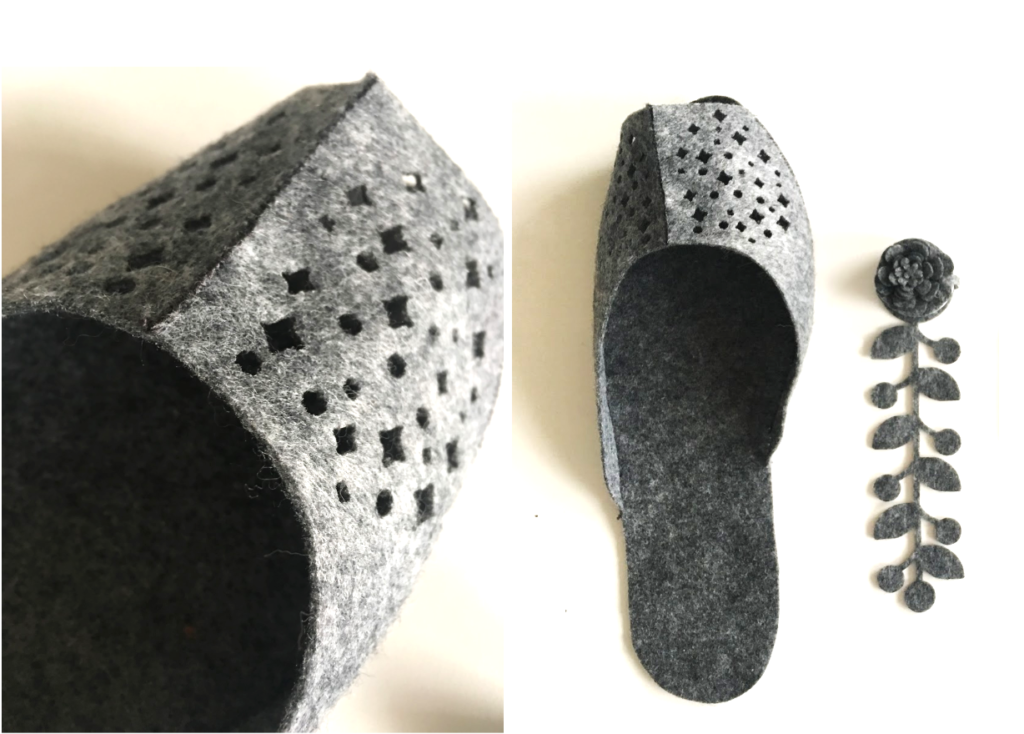
After that, we found a “one-piece” pattern design for slippers, which are very useful and inspiring, see figure 5 and figure 6. These design doesn’t need to incorporate extra parts such as insoles, midsoles or outsoles and meet our minimalist aesthetic goal. So we decided to try this type of design instead and followed a DIY tutorial on

Source from https://inhabitat.com/royal-college-of-art-unveils-design-for-the-real-world-exhibition-at-london-design-festival/royal-college-of-art-design-for-the-real-world-exhibition-london-design-festival-13

Source from http://wonderfuldiy.com/wonderful-diy-handmade-felt-slippers/
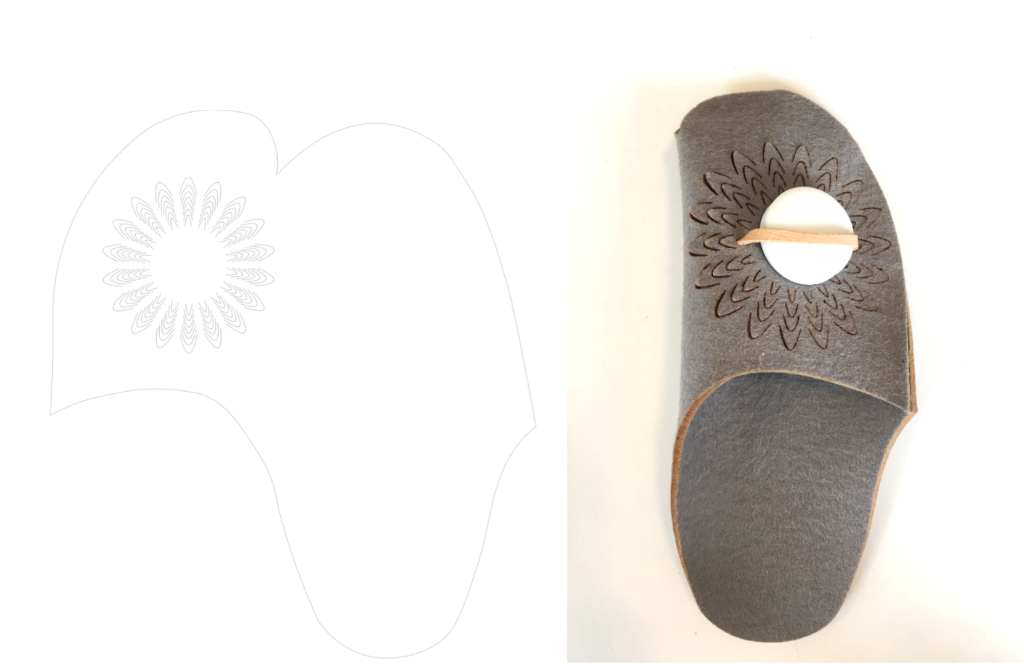
The previous attempts provided the basis for our final design for the Sleepers, however after considering the wireless functionality of the final prototype we decide to switch to particle photon instead of puck.js. And we came up with the idea of using layer upon the other and cut felt halfway through to cover the wire to take advantage of the thickness of the felt. So we planned out the two layers with circuit route in Illustrator as shown in figure 8, and the final result after laser cutting is as shown in figure 1. We then found out the wires we have are thicker than we planned, they will also be possibly broken or become less stretchable after we assemble the final slippers, so we use conductive thread instead as shown in figure 9. In the end, the conductive thread was sewed onto the side of the lineal edges, which is a bit tricky when using the needle to find the right angle. Some other tips to use this method is to use a little bit hot glue to stabilize some components such as resistors and battery. The other shortcoming and to improve in the future is that the burnt marks will be shown on the back side which affected the general appearance. This, however, can be improved with more experiments to find a better machine setting.
The power supply we are using is 3.7v rechargeable Li-ion battery, because photon board should be powered between 3.6VDC and 5.5VDC, so we changed the original idea of using lighter power supply such as coin batteries. We also sewed a two pin connector to connect to photon board for the connection.


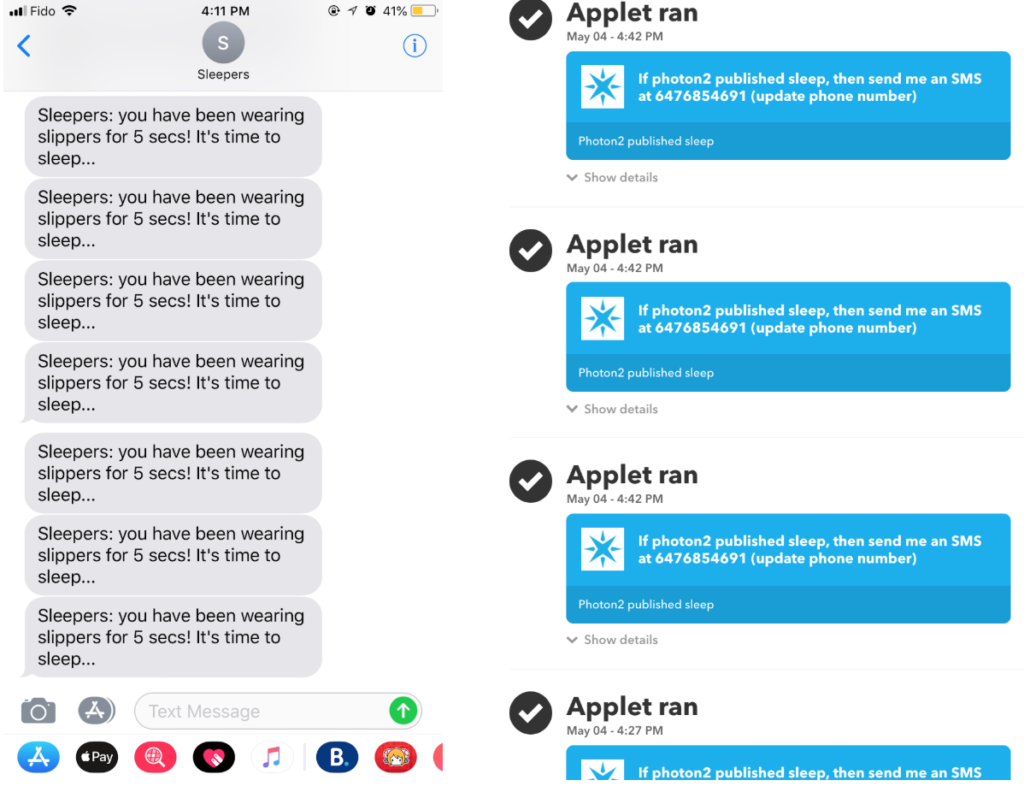
Figure 11(right): IFTTT app activities
